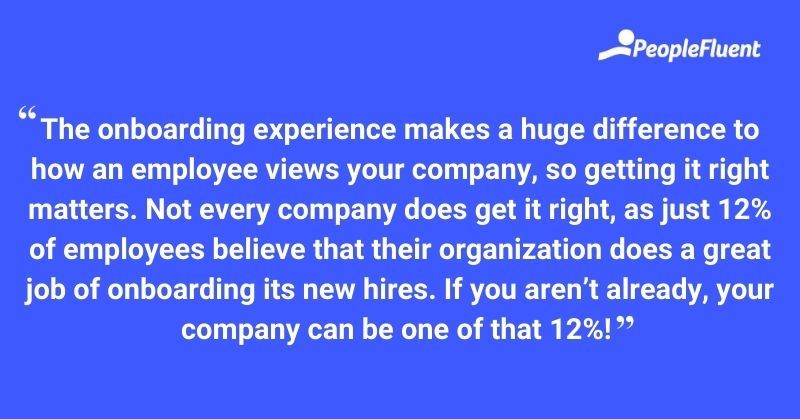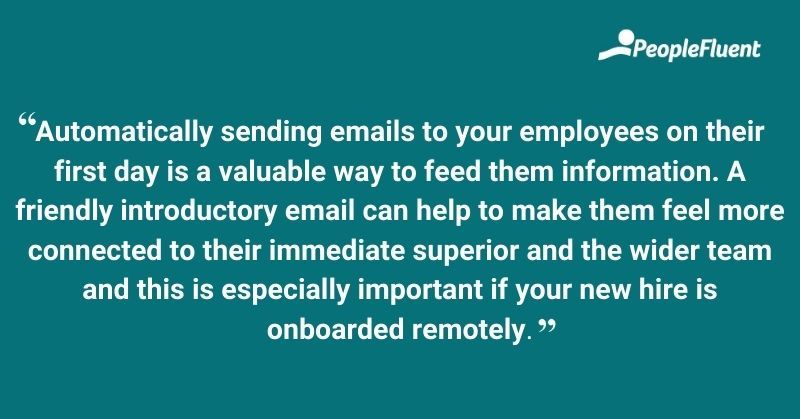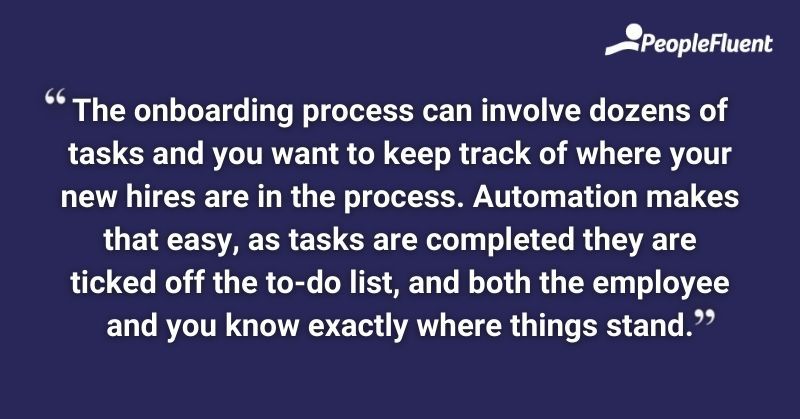Published: Jan 25, 2022Time to read: 4mins Category: Insights
6 Ways Automation Can Improve the Employee Onboarding Experience
The first few days at a new job can be daunting—lots of new faces that you can’t yet put a name to, new processes to learn, and new procedures to follow. The onboarding process is crucial in easing new joiners into their role—and you need to get it right.
Make no mistake, first impressions are important. A positive experience matters and how recruiters interact with candidates throughout the hiring process can affect how they view a company. A smooth and stress-free onboarding process will result in an enthusiastic hire but, equally, a poor experience may result in losing that employee altogether.
You can ensure that your employee’s experience is the best it can possibly be by automating the process. According to a poll conducted in our recent webinar, 57% of respondents aren’t currently using automation at any point in their recruitment process. However, adopting automation could mean a process with fewer snags and more time to focus on offering a better personalized and more fulfilling experience.

KEEP READING | ‘9 Steps to a Better Onboarding Program’
Why Getting Onboarding Right Matters
The onboarding experience makes a huge difference to how an employee views your company, so getting it right matters. According to research from Gallup, only 12% of employees believe that their organization does a great job of onboarding its new hires. You need to be in that 12%! New employees don’t need to be confused by communication or left wondering what’s next and automation can help you to revamp how you deliver your onboarding experience.
How to Use Automation In the Onboarding Experience
Automating onboarding for new hires means using technology to create a hassle-free experience. Let’s look at some ways to use automation in the onboarding process.
1) Passing on Pre-boarding Documents
Don’t wait until your new starter’s first day to make a good first impression—employee experience matters from the beginning! Sending offers out quickly by automating the admin process with e-Signature means new hires will be well-informed from the earliest steps of the process. The personal touch matters and your documents can be tailored to individual candidates and roles.

RELATED READING | ‘Preparing Employees to Run on Your Fast Track: 10 Onboarding Best Practices’
2) Creating and Distributing Logins
From the moment your new employee’s onboarded, there’s a long list of systems and technologies they’ll need access to—email logins, IT service applications, and payroll. Waiting for this information can mean they don’t have the tools they need to get started. Not only that, but your new employee may not be sure who to get these details from. This can lead to confusion, disillusion, and time wasted. This process can be overwhelming for your HR and IT departments to keep up with too. But automating this process means your newest employees have everything they need to hit the ground running from day one!
3) Scheduling Emails
Automatically sending emails to new hires on their first day is a valuable way to feed them information. A friendly introductory email can help to make them feel more connected to their immediate superior and the wider team and this is especially important if your new hire is onboarded remotely. Scheduling these emails ensures they go out on time—onboarding day can be hectic for managers too.
4) Delivering Learning and Development
A one-size-fits-all onboarding process tends to fall apart when it comes to the essential, role-specific information that a new hire needs to know in order to do their job. This information needs extra emphasis, and this is easier to provide when the process is automated. New starters can be automatically sent learning based on role-based profiles, ensuring they get to see what’s most relevant to them in a timely manner.

MORE TO EXPLORE | ‘8 Uses of Automation in Your Recruitment Process’
5) Automating Task Checklists
The onboarding process can involve dozens of tasks and you’ll want to keep track of where your new hires are at. Automation makes that easy, as tasks are completed they are ticked off the to-do list, and both the employee and you know exactly where things stand. Better still, by having the process automated, paperwork is cut to an absolute minimum and nobody is buried alive by forms.
6) Scheduling Time Efficiently
Your new employees are going to want to meet or at least be in contact with key personnel and, in a fast-paced environment, negotiating a timetable for that can be a challenge. Why waste time wading through everyone’s daily schedules when automation can do it for you? With an automated scheduling system, your new hires can be allocated time without any hassle.
The Tools You Need to Improve Your Candidate Experience
To learn more about the value of automation in your recruitment strategy, listen to a recording of the webinar ‘How Automated Messages Will Improve Your Candidate Experience’.